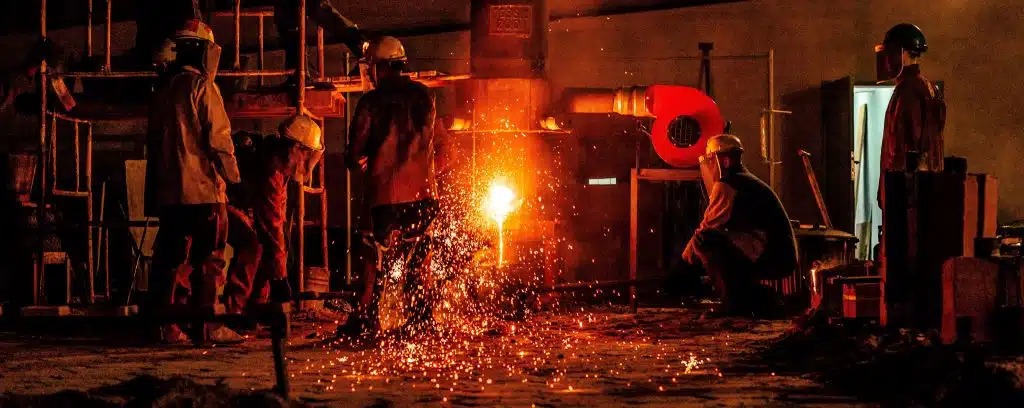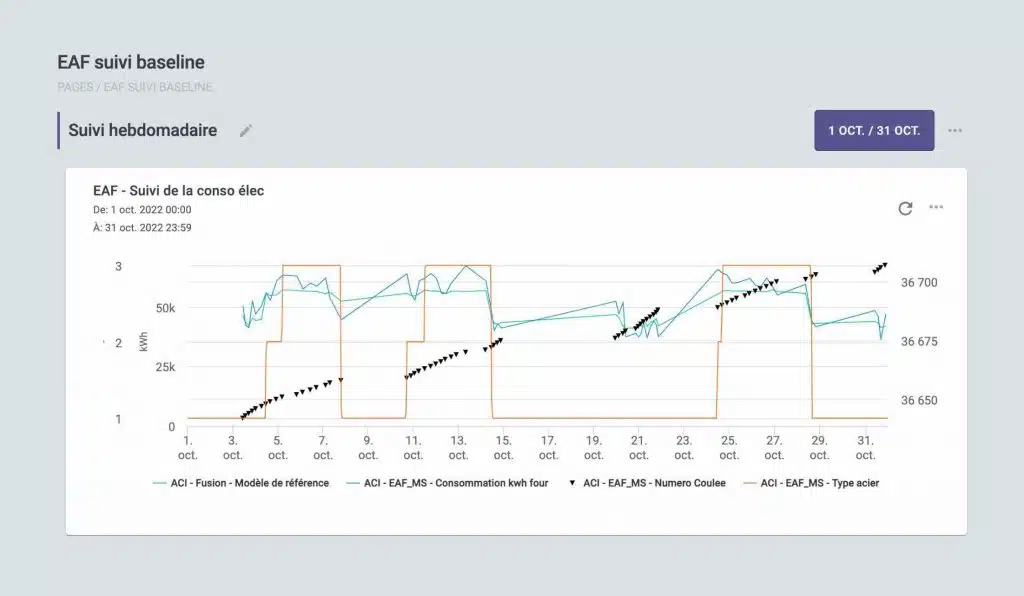Friday, 02/01/2026 | 04:08 GMT+7
Steelmaking facilities require a significant amount of energy to heat furnaces to high temperatures to smelt iron ore. Steel plants are therefore considered among the largest consumers of energy in the world.
With the increase in energy prices and the growing awareness of the environmental impacts of the steel industry, governments have put in place environmental regulations and public policies aimed at decarbonizing the industry.
Energy efficiency is an increasingly important issue in the current context of price volatility and energy consumption control.
With increasing global demand for manufactured products and growing pressure to reduce greenhouse gas emissions, the steel industry faces significant challenges in meeting these demands.

Forecasts suggest that demand for steel will continue to grow, particularly in developing economies. However, to meet greenhouse gas emission reduction targets, steel industries will need to continue to innovate and implement solutions to improve their energy efficiency and reduce their carbon footprint.
Key 1: Digitize Your Energy Consumption and Control It in Real Time
Digitizing your energy consumption is a very efficient way to visualize your energy data in real time. Thanks to software, such as Energy Management and Optimisation Solutions (EMOS), you can follow your energy consumption in detail and identify the most energy-intensive sources. This approach also allows you to detect abnormal behavior and report any anomalies. It is also a question of having your site audited to list the SEUs (Significant Energy Users), to check that you have the necessary data on these perimeters, and to identify the most important levers by taking into account the various constraints of your site.
Key 2: Set up an Action Plan, a Strategy and Clear Objectives, and Include your Teams from the Beginning
Energy saving objectives must be aligned between all the different teams involved. Field operators should be informed of equipment upgrades that prevent energy waste. Maintenance teams must also be involved to ensure that machines are running optimally. Finally, managers should put in place tracking tools to measure results and monitor energy consumption.
Once you have set your objectives, aligned your teams, and carried out an audit, you will be able to correctly choose the priority actions and implement your action plan, starting with those that have the greatest impact.
Key 3: Centralize All Your Data, Including External Factors That Influence Energy Consumption
It is important to gather in one place not only energy consumption but also process data (temperature, pressure, humidity, etc.), weather data, and production data (type of product, composition of scrap, tonnages, instructions, quantities of incoming/outgoing parts, pace of shifts). This will allow you to set up relevant energy performance indicators, to start analyzing consumption according to these factors, and to draw the first conclusions.
Key 4: Identify Your Energy Losses
As a first step, you will need to explore the data concerning the areas of interest identified during your audit to identify potential energy losses. A first simple analysis is to look at the operation of the machines during production line stoppages or during weekends. Indeed, if the production of parts is at zero but the consumption is not, then there are first action levers. An EMOS can also allow you to arbitrate between leaving machines on during downtime or turning them off despite the overconsumption of restarting because you can calculate the energy consumption in both scenarios very simply and convert it into Euros.
An Excel spreadsheet will require a lot of time and handling to obtain these results. There are many potential energy losses on a site as large and complex as a steel plant such as a dust collection system that does not work at the right times, compressed air leaks, heat loss in pipes, machines running empty or misuse of equipment. These losses are often the easiest to treat because they do not require any additional investment but simply a reconfiguration of the setpoints.
Key 5: Model Your Consumption
It is possible to model and predict the energy consumption of your machines according to the influencing variables of your system. For example, for an oven, it will be necessary to take into account a lot of information. A simple linear regression on Excel would not be enough to analyze the influencing variables. For an effective consideration of these variables, it would be necessary, for example, to consider pressure, temperature, product tonnage, burner operating modes, etc.

Data modeling also allows the deployment of these models in real time to detect deviations between the model and the real situation. This allows those responsible to be alerted to "real" drifts taking into account a complex and changing environment, not only for isolated consumption peaks. Such models allow for the identification of abnormal heat losses, such as from a furnace due to refractory damage.
According to metron.energy








 Webinar 2: “Financial Support for Energy Efficiency Enterprises – Opportunities and Challenges”
Webinar 2: “Financial Support for Energy Efficiency Enterprises – Opportunities and Challenges”
 Vietnamese enterprises achieve green growth and cut costs through energy efficiency
Vietnamese enterprises achieve green growth and cut costs through energy efficiency
 Capacity Building for Program Implementing Entity
Capacity Building for Program Implementing Entity
 Enhance Energy Efficiency Knowledge for Managers of Cement Industrial Enterprises
Enhance Energy Efficiency Knowledge for Managers of Cement Industrial Enterprises
 Capacity building for participating financial institutions in Ho Chi Minh City
Capacity building for participating financial institutions in Ho Chi Minh City
 Strengthening capacity for energy management officers of local government agencies
Strengthening capacity for energy management officers of local government agencies
 Strengthening Sales and Marketing Capacity for Energy Efficiency Equipment and Solution Suppliers
Strengthening Sales and Marketing Capacity for Energy Efficiency Equipment and Solution Suppliers